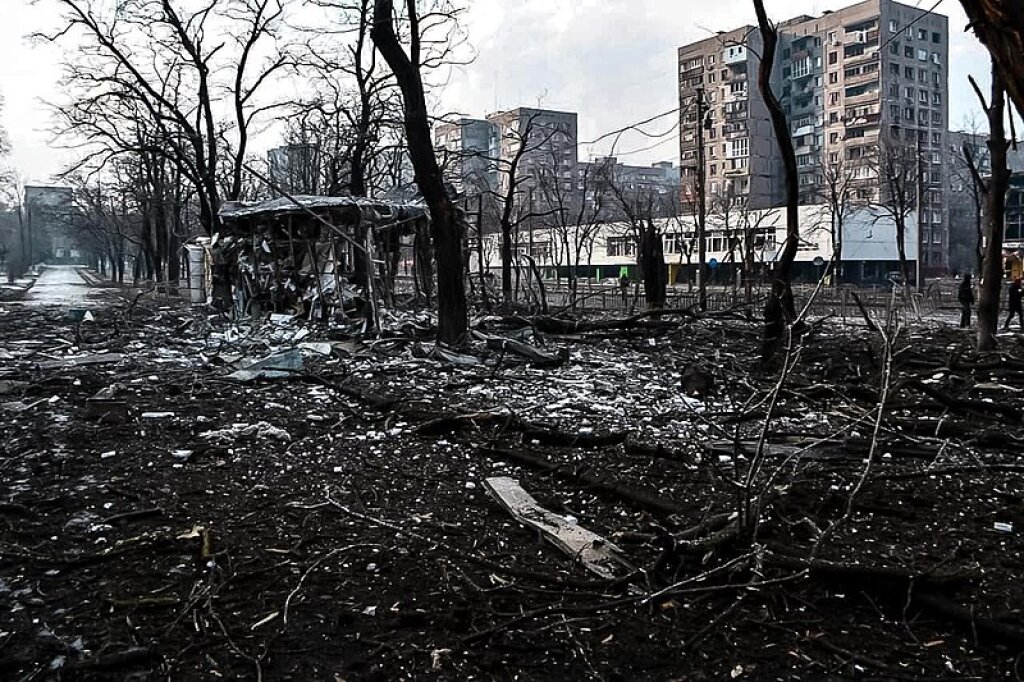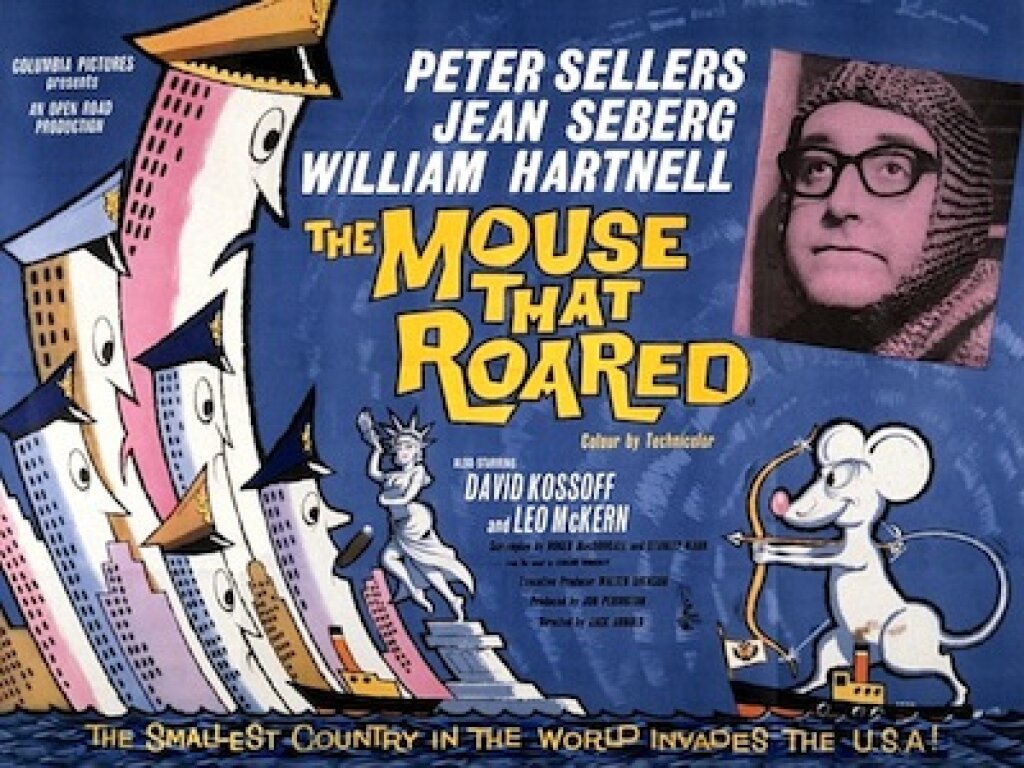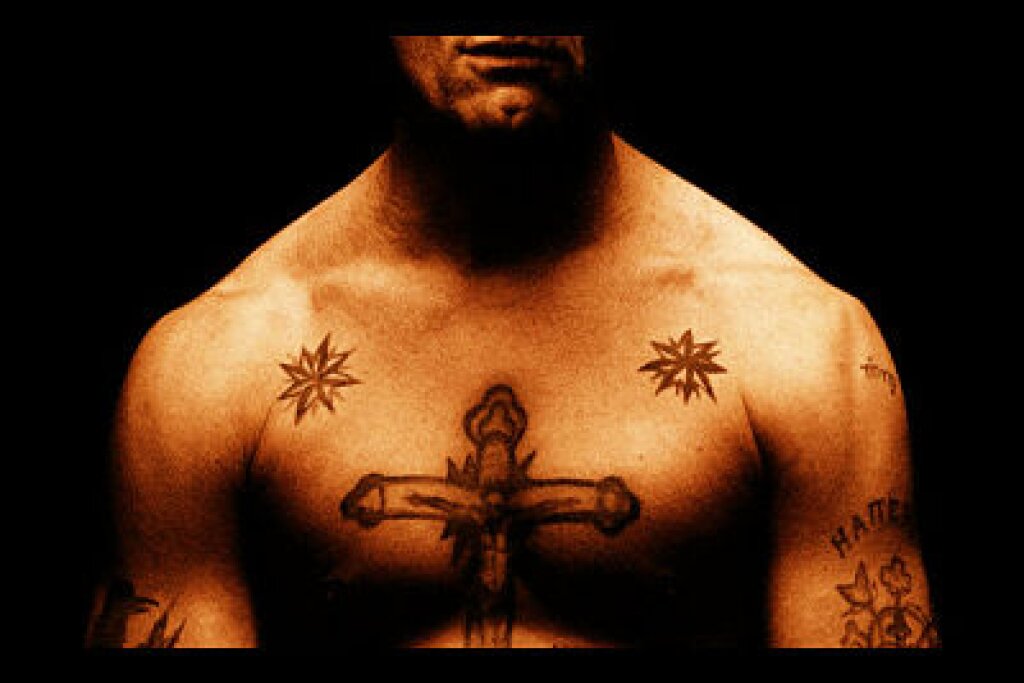The Jordan Center stands with all the people of Ukraine, Russia, and the rest of the world who oppose the Russian invasion of Ukraine. See our statement here.
Above: City Streets of Mariupol during the Russian siege
This blog is based on a longer article,"Writing around War: Parapolemics, Trauma, and Ethics in Ukrainian Representations of the War in the Donbas," published in East/West: Journal of Ukrainian Studies (Vol. 9, No. 1, 2022).
Uilleam Blacker is Associate Professor in Ukrainian and East European Culture at the School of Slavonic and East European Studies, University College London.
The literary historian Kate McLoughlin has written that "the reasons that make war’s representation imperative are as multitudinous as those which make it impossible." When war happens, writers and other artists feel compelled to react. Their motivations, according to McLoughlin, are many and urgent: the need to make sense of war, to give meaning to death and sacrifice, to keep a record of events, to honor the dead, to inform society, and, often, to warn against war and promote peace; we could add the need to agitate for support and boost morale.
Yet these most urgent tasks are made next to impossible by the challenges writers and artists face when they get down to the business of representing war. War is a complex and extreme phenomenon that is almost incomprehensible to those without experience of it; war inspires extreme political polarisation; representing war throws up thorny moral problems, such as the extent to which graphic violence should be shown or the question of who has the right to speak about the experience of extreme violence; finally, war is traumatic, and traumatic experience is notoriously difficult to describe.
This paradox at the heart of representing war is often avoided through the use of pathos, gratuitousness and oversimplification; and yet, when the strange power of this paradox is harnessed, war literature can be truly inspired, as authors from Homer to Joseph Heller have shown.
When I started studying Ukrainian literature in the mid-2000s, the problems I came across included Ukraine’s postcolonial identity, the renegotiation of gender roles, the clash and hybridization of native tradition and Western postmodernism. Writing about war was not on my horizon, nor was it on the horizon of the writers who were the object of my research. And yet, despite being unprepared for war, Ukrainian literature proved more than up to the task of describing it.
Ukrainian literature was transformed by the war. Soldiers and volunteers with no previous literary experience became writers, creating a powerful veteran literature; established writers became soldiers, volunteers, or internally displaced people and incorporated their experiences into their work. Writers from the east, many of them Russophone, became much more central to the Ukrainian literary process; some of those writers switched to Ukrainian, no longer wishing to be associated with the aggressor’s culture.
The paradox of representing war is powerfully present in this literature. Poets like Iryna Shuvalova, Iya Kiva, and Kateryna Kalytko have interrogated the language’s ability to adequately account for war. This can lead both to helplessness and renewed faith: poems are, in Oksana Maksymchuk’s words, “Helpless yet/busily resilient//they form like clouds/woven of gauze and mucus//dealing in recovery of broken/hope, delivery of the forgotten.”
Many writers turned to documentary or non-fiction forms as the only appropriate way of tackling their subject. Memoirs—such as Artem Chekh’s account of his military service or Olesya Khromeychuk’s book on the loss of her brother in the war – have been a key genre, as have been diaries like those of Andrei Kurkov. Dramatists like Natalia Vorozhbyt have built plays out of interviews carried out at the frontline. Documentary film has also flourished—Iryna Tsilyk’s The Earth is as Blue as an Orange or Alina Gorlova’s This Rain Will Never Stop are among the best examples of the genre you will see anywhere in the world today. Even poets, such as Lyuba Yakimchuk, have identified their wartime practice as documentary.
One striking strategy employed by Ukrainian writers across various genres is what McLoughlin calls "parapolemics"—that is, focus on the spatial or temporal "outskirts" of war. Representing actual fighting is, of course, a staple of war art. Yet experiences of extreme violence are notoriously hard to describe and are thus often replaced by stereotypical images and narratives of action and heroism. To avoid this tendency, writers often move their focus away from the battlefield to the trenches, checkpoints, or military hospitals; to the streets and homes of besieged cities. War literature also focuses on the periods immediately before or after the outbreak of violence, or on lulls in fighting.
Natalia Vorozhbyt’s settings are thus checkpoints, basements, quiet backroads, or Azov beaches, where the only trace of the war is distant sound of shelling. Olena Stiazhkina set her novella In God’s Language entirely in an apartment in occupied Donetsk where two former friends, now on opposite sides of the divide, have a tense conversation at gunpoint. Everything else in the novel is flashback. Serhii Zhadan’s The Orphanage takes the form of a journey through a war-torn city in which the protagonist does everything he can to avoid the fighting: the novel is a sort of urban guide to avoiding war.
The aftereffects of war are also a frequent focus. Nothing speaks more to the effects of war than the dead body. While bodies in blockbuster movies mean the end of a character’s involvement, for the parapolemic writer, it is a focal point: physical proof of atrocity that demands attention. In Stiazhkina’s novel, the protagonist collects the body of his ex-wife’s partner from a makeshift morgue run by Russian mercenaries and has to carry it away on his shoulder, bringing him into strange, intimate contact with the corpse; Vorozhbyt’s play Bad Roads features a scene where two soldiers transporting a body—the ex-lover of one of them—break down on a quiet night-time road, forcing them into a long period of proximity with the dead man. One of the most moving chapters in Khromeychuk’s book describes the author’s own encounter with her dead brother in a chapel before the funeral.
The dead here are not dramatic props on a blasted battlefield, but messengers that speak of the unspeakable trauma of war. In Khromeychuk’s memoir, the soldier’s mother carries on a conversation with her child as though he were alive. Stiazhkina’s protagonist holds a reconciliatory conversation with the man he is carrying, a man who is no longer his rival. In many of these texts, a cell phone rings on a dead body—a piercing parapolemical detail known only to those who mop up after battles, and which raises painful questions around the relationship between the living and the dead, the witness and the victim.
Susan Sontag has written of the problematic nature of photographs of corpses, which can play on the voyeuristic allure of the repulsive. If handled sensitively, however, these images can provoke necessary reflections on the viewer’s ethical implication in the suffering of others. In literature, the parapolemic lingering on the aftermath of war facilitates this type of encounter. This focus on the real, lived experience of those in hidden backstreets and forgotten epilogues of violence, and the empathy and understanding this perspective generates, is the defining feature of contemporary Ukrainian war literature. Ukrainian writers have created something truly urgent and essential from the impossible task of representing war.



